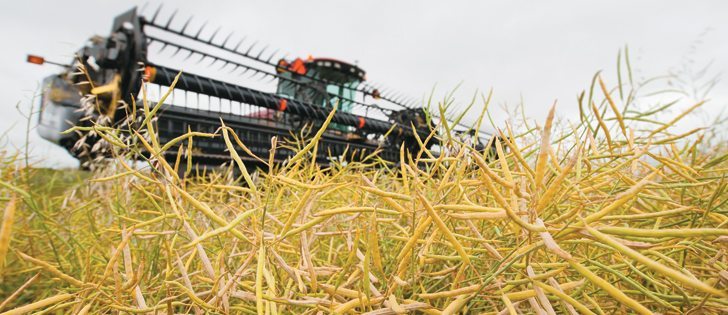As the mixed-up 2015 crop stumbles into harvest, analysts, grain brokers and traders are keeping close watch on provincial yield reports and the observations of crop watchers.
With everything from high yield crops in the eastern Prairies, to drought-ravaged crops in the west, to bouncing-back crops in many formerly dry areas, the actual size and state of the crop will be hard to pin down.
“The conditions are so variable,” said Chuck Penner of LeftField Commodity Research.
“You have from really lousy fields to some pretty good fields . . . It’s how those balance each other out.”
Read Also

Critical growing season is ahead for soybeans
What the weather turns out to be in the United States is going to have a significant impact on Canadian producers’ prices
Penner is keeping a close eye on crop reports related to harvest progress and yield results from Saskatchewan and Alberta, because the Aug. 21 Statistics Canada report’s conclusions will be out of date because of changing weather.
The Statistics Canada surveys were done in late July and the first few days of August, just as the drought in the western Prairies was starting to lose its grip.
Boughts of cooler, wet weather in many areas relieved some of the most extreme drought conditions and actually caused excess moisture problems in some areas.
Other analysts were similarly looking at more contemporary measures than StatsCan to gauge the crop.
“There seems to be more optimism out there,” said Lacombe, Alta., feedgrain broker and analyst Kyle Sinclair, who speaks with many farmers.
“We get more people calling (since the rains came in the droughted western Prairies) saying ‘I need to clear out my bins because I know I’ve got a crop coming in’. ”
Many markets analysts are chiefly concerned with assessing the likely size of the Canadian canola crop, pegged by quite a few analysts at less than 14 million tonnes, but above the CWB crop tour’s July projection of 12.5 million tonnes. Others are watching the regional variations that affect the many small acreage crops that dominate Western Canada.
Penner, a specialist in special-crops supply and demand analysis, said pockets of good or bad weather during the season can make a big difference for overall production of specialty crops.
Even larger acreage prairie crops, such as durum, can see an outsized move in the markets if provincial crop reports and StatsCan find something surprising, as long as Canada has a large percentage of world trade in that commodity.
That is true of canola and durum, with durum of particular interest to world markets right now.
“That could be an important number because there is so much reliance on a decent crop coming out of Canada,” said Penner.
John Duvenaud, the publisher of the Wild Oats markets newsletter, said canola is drawing the most chatter, but wheat yields might be the real item of interest as harvest progresses. He’s heard surprising reports of disappointing wheat yields.
“They’re not getting it,” he said of expected big yields from some early-harvested crops.
“It’s like 28, 29 bushels (per acre) and this is in decent wheat country. They look good, but they’re not getting the yields.”
Sometimes the August StatsCan production forecast draws a lot of attention, but this year it has been undermined by the switch from drought to rain at around the time the survey of farmers was taken.
For some, that wet weather also brought hail. Sinclair said a three-mile wide hail storm came through his area, so a lot of crops got flattened. But farmers near them got rain and appear to have a better than expected crop coming.
Getting the exact size of any of the crops pinned down will be difficult until a good portion of the crop has been harvested, Sinclair said.


















